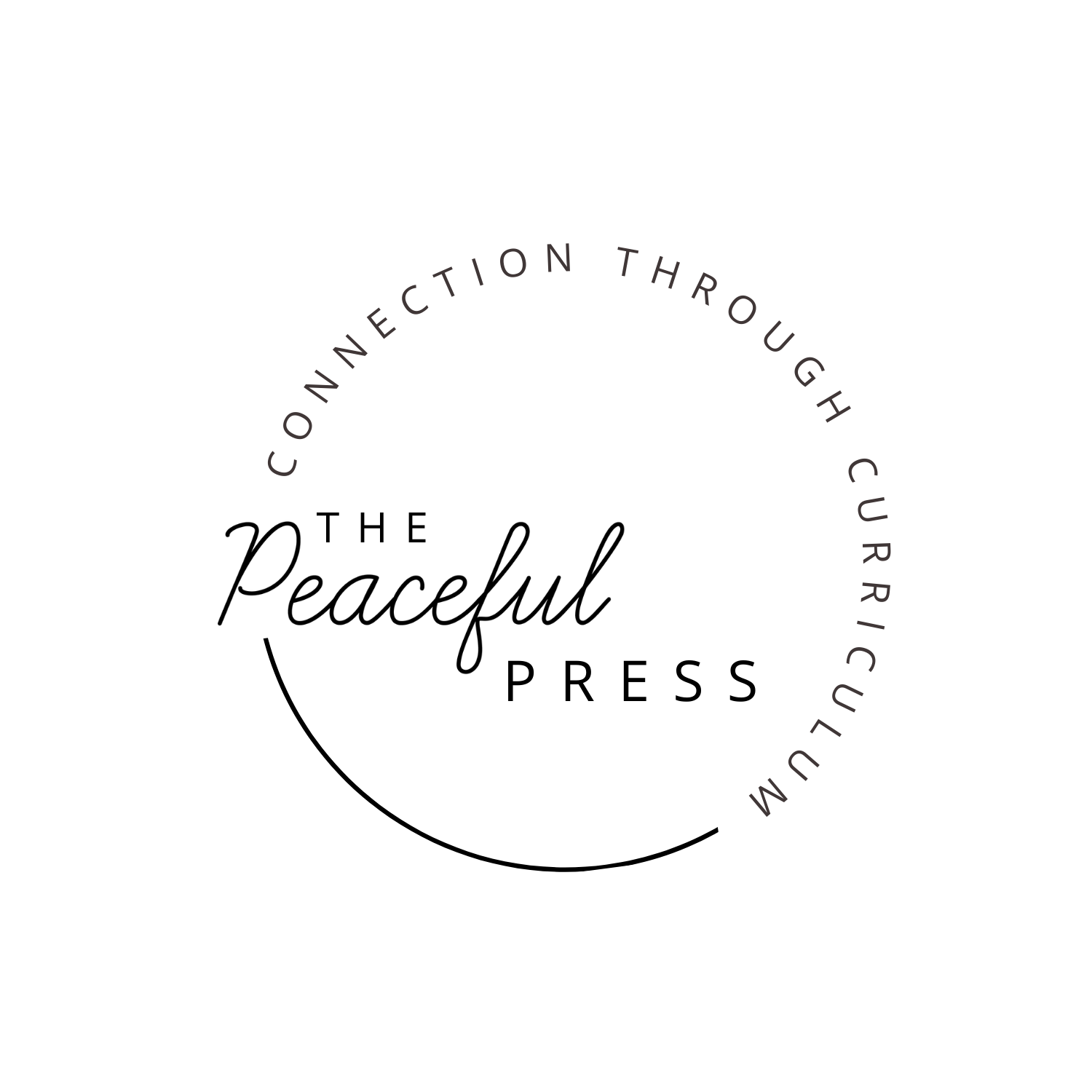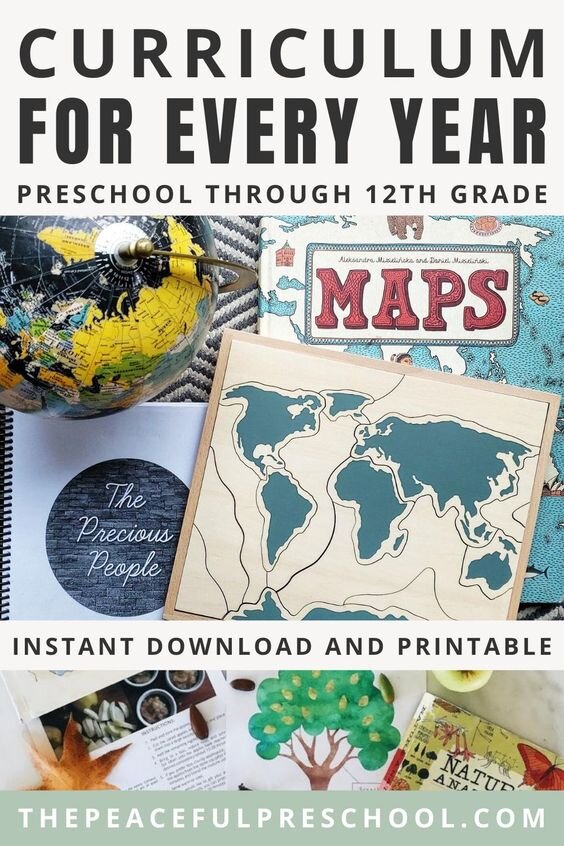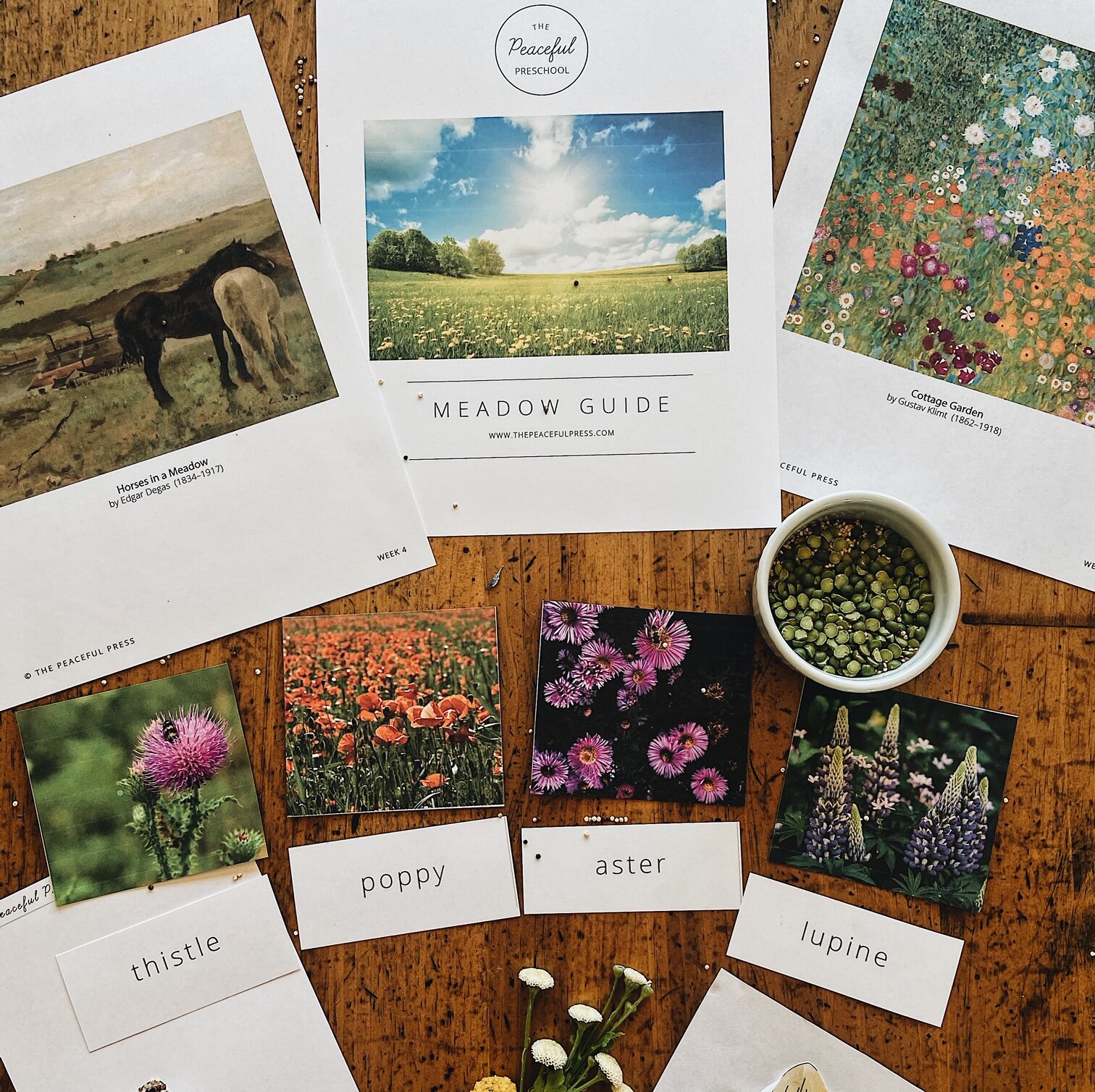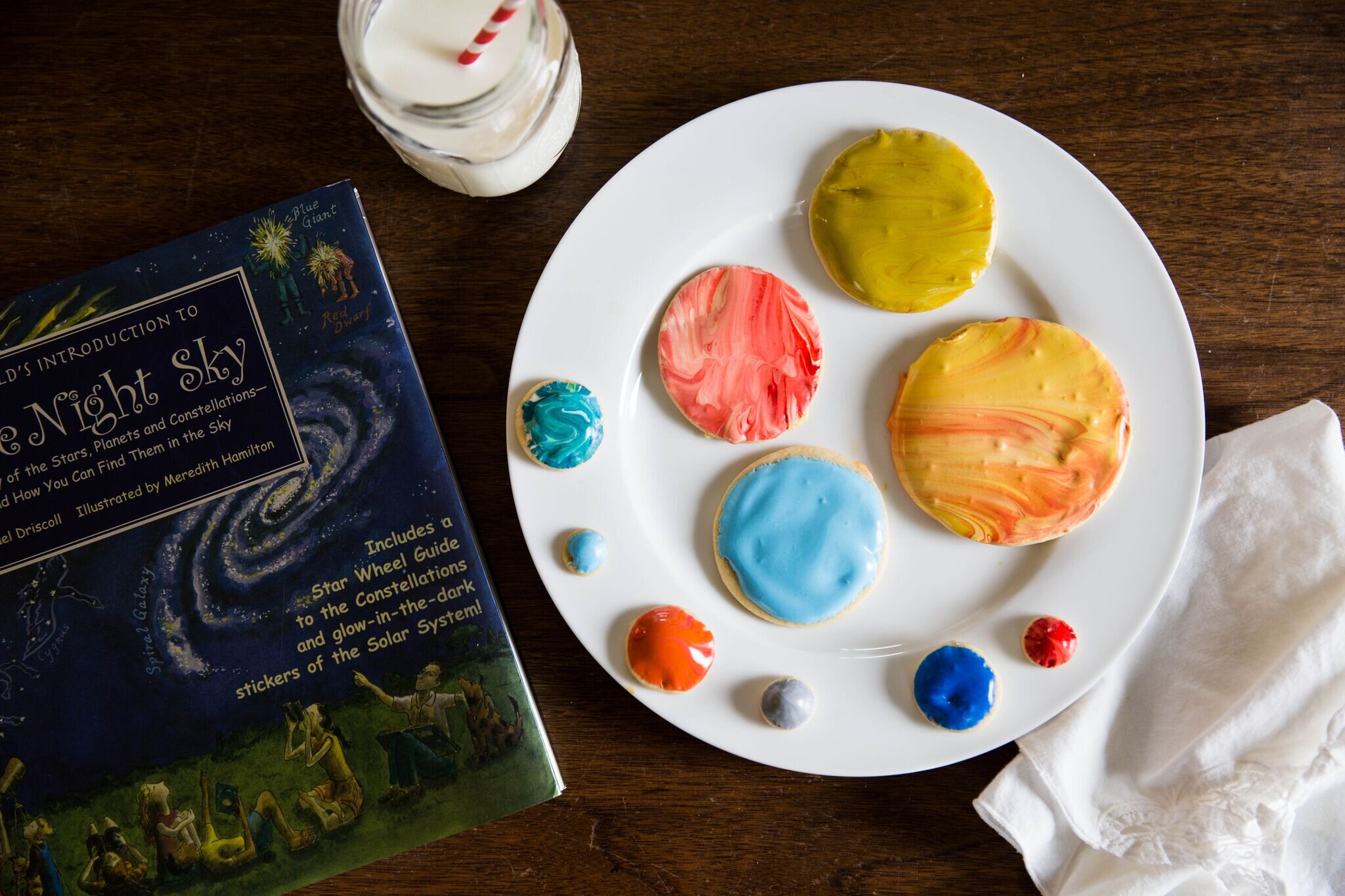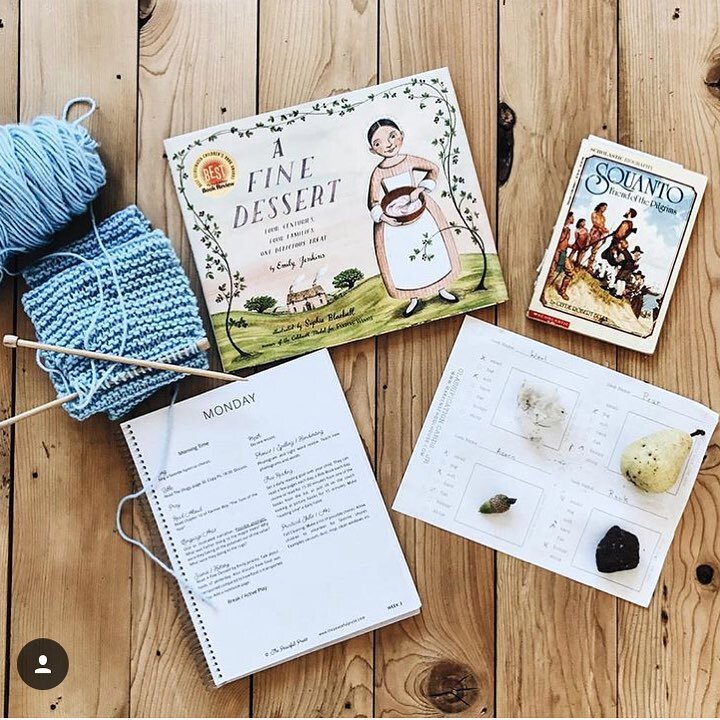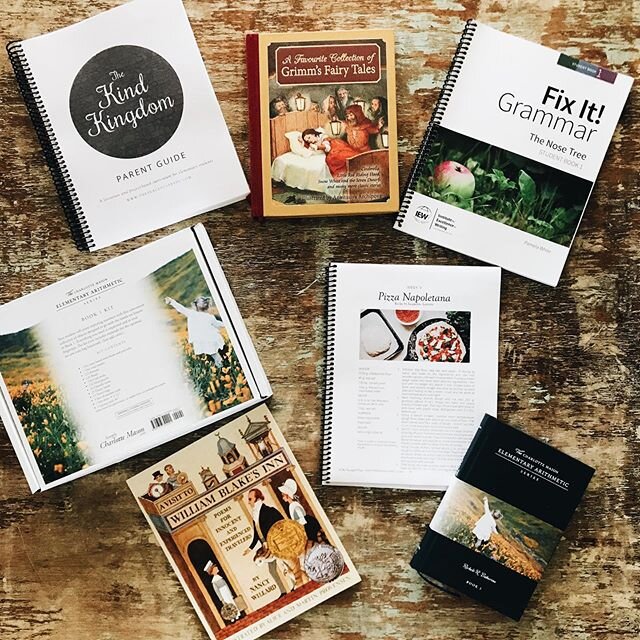A Year by Year Plan
Many families are writing to ask which resources they should use for each grade. We believe in family-centered homeschooling, choosing as few resources as possible, and combining grades so that we can savor homeschooling instead of stressing over it. We want you to have plenty of time to read aloud to your children, bake together, and take a nature walk, without feeling like you are falling behind.
“I think this was wise; the greatest service we can do to education today is to teach few subjects. No one has time to do more than a very few things well before he is twenty, and when we force a boy into mediocrity in a dozen subjects we destroy his standards, perhaps for life.” ~ C.S Lewis
Preschool and Kindergarten
If you have children four or under who don’t know their letters, consider The Peaceful Preschool.
If you have children five and under who know their letters, choose The Nature Guide. If your child is an older kinder student or has developed great fine motor skills, you could add a workbook from Handwriting Without Tears to give them some writing practice.
Ages 6 and Younger
If you have children 6 and under who know their letters and have well-developed motor skills, use The Playful Pioneers but add a Nature Guide or The Peaceful Preschool twice a week for preschool students.
If you are using The Playful Pioneers you would also add a math and phonics program for your five and six-year-olds. We recommend Right Start Math and All About Reading. Busy parents could also add an Explode The Code workbook and Handwriting Without Tears so your child has some work they can do while you are working with another student.
Ages 6-12
If you have children between ages 6 and 12, we recommend looping through The Precious People (World History) The Kind Kingdom (European History), and The Playful Pioneers (American History). In order to decide where to start, we suggest looking at the booklist with your child and discovering which topics are the most exciting for them.
You could also decide where to start based on your own home location. Many Charlotte Mason families choose the history of their own home country first, and you could work your way from the closest in familiarity (for most of us this is American History) outward towards European and World History.
What Else Do I Need?
With children in grades 1-3, we add phonics and spelling (the elementary resources include writing and notebooking or narration prompts so you don’t need added writing). We recommend All About Reading and Explode the Code.
With children in grades 4-6, you could add grammar and writing. We love Fix-It Grammar and History-Based Writing Lessons.
For all elementary ages, you will add a math resource. We have found Right Start Math to be the most comprehensive and concrete, but many families have used Math U See and love it.
What About After Elementary School?
Once you’ve gotten through the elementary school years and developed a love of learning with your child, there are a million beautiful choices for the junior high and high school years. We have kept our junior high students learning with our Peaceful Press resources, simply adding in extra reading and writing. Later, we create a course of study based on what our older child is interested in, and what their educational goals are.
We have loved resources from James Stobaugh, Apologia Science, Teaching Textbooks, Khan Academy, and have heard great things about the Classical Conversations Challenge Program, Veritas Press, and Ambleside Online. We also recommend finding co-op classes or tutors in the junior high and high school years for subjects such as lab science or foreign languages.
Click to read more about our recommendations for older students
This post contains affiliate links for resources we have used and loved. Thanks for clicking through and showing your support.
